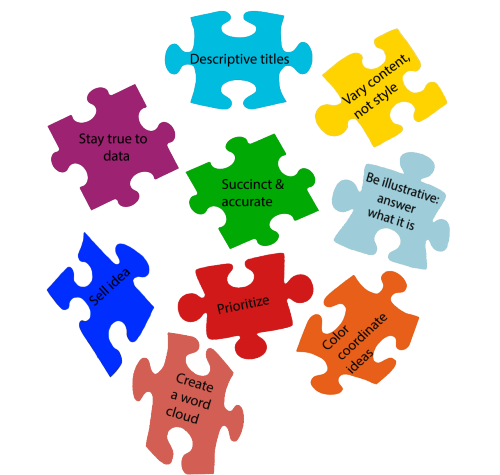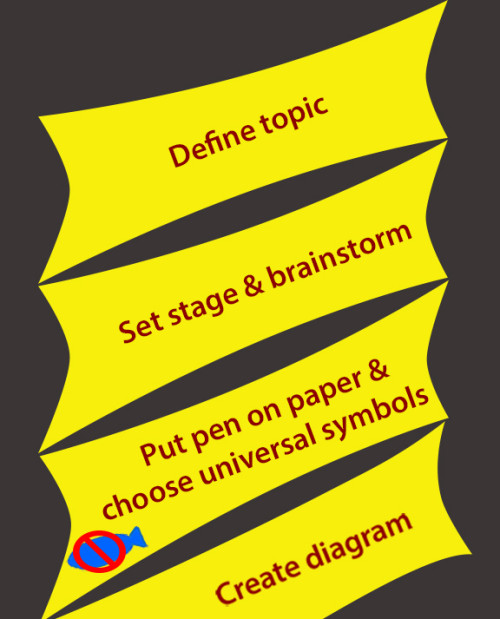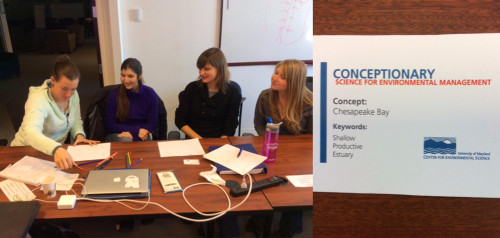How many scientists does it take to make a good story? Learning the art of communicating science
Aimee Hoover, Cara Schweitzer, Suzi Spitzer ·Aimee Hoover, Cara Schweitzer, Suzi Spitzer
The words ‘science’ and ‘communication’ are too often disjointed in the eyes of academic scientists. Science involves building and organizing knowledge through testable explanations and predictions, while communication describes the exchange of information and meaning across time and space using various means. Scientists are often guilty of providing subpar explanations of their work. There is a persistent struggle in the scientific community to discuss findings with all audiences: from peers, to policymakers, to schoolchildren. Failure to properly communicate can be detrimental to everyone, wasting time and energy. Every once in a while, a great communicator bridges this gap and brings people of all backgrounds together. This is the type of person scientists should strive to become, but this transformation can be uncomfortable and unnatural to those who are not born as gifted speakers. Fortunately, communication is a skill that can be learned.
Eighteen scientists from five campuses at the University of Maryland converged in Annapolis at the University of Maryland Center for Environmental Science’s office to run a workshop that focused on developing skills meant to enhance their efforts of communicating science (Image 1). The shared offices of the Integration & Application Network (IAN) and the National Socio-Environmental Synthesis Center (SESYNC) were overtaken for a few hours to facilitate our group learning of scientific “phraseology”. No matter how good our science is, it is ultimately not useful if our message is not conveyed to a broader audience outside of our small subset of academic peers. There is a balance between quality science and effective communication, and much as a toddler learns to stand before walking, we began our journey learning how to incorporate this new balance into our work. The goal of the workshop was to improve our understanding of how we might successfully disseminate information to individuals with various backgrounds in scientific literacy and understanding.

Scientific writing is not synonymous with science communication. The former is exclusive and driven by text, results, and data interpretation with the assumption of extensive knowledge within the field of study. Science communicators strive for equal representation of graphics and text, pertinent examples that apply to wide audiences, broader conclusions, and importantly, inclusiveness of the audience and stakeholders. Communication is an art form and revolves around telling stories to teach people. Emphasizing synthesis and visual presentation will help people understand the stories behind scientific research. Think about your best teachers, your favorite movies, the most effective advertisements, and top political figures: all are examples of successful communication. What about scientists? Those who are great communicators reach large and diverse audiences, such as Charles Darwin, Rachel Carson, Jacques Cousteau, Richard Dawkins, Carl Sagan, and Neil Degrasse Tyson.
Failures of communication in science not only limit the utility of discoveries and impede the progress of science, but can have even more severe consequences, a clear example being the tragic deaths from the Challenger and Columbia space shuttles. Both disasters could have been avoided if better communication strategies were utilized to voice scientific concerns. Brilliant minds can struggle to communicate, but this must be overcome for science to advance.

Although technology can take us far, our progression may not always be in the right direction. Advances in technology have resulted in the ability to create powerful infographics and presentations, but we must learn to use technology to our advantage in order to strengthen and enhance our work. Developing skills to create better PowerPoint presentations is one way to communicate science. Strong PowerPoints start by distancing themselves from their cousin, the teleprompter. Integration of words, images, and numbers is the first step according to Edward Tufte, a data visualization innovator. It is important to create a presentation driven by content over style, get the audience thinking, know your content and those you are speaking to, eliminating unnecessary jargon, and use appropriate humor. Invest effort into appealing slides and avoid using low-resolution, improperly cropped images. Take the time to think about why are you creating a PowerPoint and who the audience will be, while planning thoroughly, getting feedback, practicing, preparing for questions, and talking to your audience, rather than lecturing at them (Figure 1). Scientists should not be composers of nondescript headlines or uninformative clickbait; we must take effort to convey our message up front. Assume no one has had their morning coffee and recognize that the title of each slide is extremely important, and it may be all some people read.

Images and diagrams can be the ever-lingering pile of dirty laundry, the remaining component of the presentation that no one wants to tackle. Some scientists actively avoid composing visual presentations until the last moment, resulting in rushed, uninformative, and confusing graphics. People have used images to communicate throughout history, from cave drawings and petroglyphs to flags and math, and now app icons and corporate branding. Symbols like a stick figure or the outline of a fish can transcend cultural boundaries and languages, making them a powerful tool to teach everyone. Conceptual diagrams, which translate “thought” into “drawing”, clearly convey information with few words, describing what, why, and how. Symbols are the essential attributes of diagrams, providing information through the use of color, size, position, shading, texture, and shape. Rethinking science in symbols is effective because it forces a clarification of thoughts to provide key points and priorities. Creating and utilizing a library of symbols can prevent diagrams from being the bothersome chores left untackled, allowing for the construction of quick and effective images that convey important messages. Conceptual diagrams can be used internationally for education because they simplify complex processes, speed communication, increase collaboration, and generate a new perspective. While these diagrams may seem intimidating, there is no artistic skill required to produce them. A powerful tool for building diagrams is available through IAN’s website, which provides a global database of symbols and tutorials. The key to creating a conceptual diagram is to first sketch a diagram on paper, conceptualizing and forming the outline, and then turn to technology to finish it. You need to know what message you want to portray before you start. Then, think about which universal symbols might apply to convey the message (Figure 2). Simple conceptual diagrams can be created relatively quickly and can result in striking conclusions (Figure 3).

Creativity can be difficult, but we can simplify and guide science communication with group collaboration. Brainstorming and sharing ideas can be extremely beneficial in conveying a message (Image 2). Communicating science may not be easy, but the effort will be greatly rewarded by ensuring full and efficient use of scientific knowledge. It can be hard to actively seek criticism from others, but it is an essential step in the development and synthesis of ideas. The offices of IAN and SESYNC allow for these integrative processes to take place, and they exist to help others in the journey of learning and applying science communication. Communicating actionable science—science that has the power to influence environmental management—takes times, energy, and effort, but producing science that is impactful on society will be a great reward.

Next Post > Scientists underwater: Reginald Truitt, Gilbert Klingel, the Bentharium and the Aquascope
Comments
-
Adriane Michaelis 11 years ago
Though there are many points in this blog that are worth noting, I’d like to focus on the idea of images and diagrams being “the ever-lingering pile of dirty laundry” and the tendency to put off imagery or presentation tasks until the last minute. This is all too true in the majority of presentations I’ve seen at scientific meetings, and it can be very frustrating for the attendee who is excited by an interesting title or abstract, only to be disappointed by a talk that was thrown together that morning. If we, as scientists, cannot communicate effectively to those within our field (or choose not to), how can we expect our messages to successfully transcend to other sectors?
-
Stephanie Siemek 11 years ago
I agree with Adriane's comment. Perhaps communication skills should be implemented into the science curriculum, since the importance of good communication is growing. Scientists learn to communicate with each other through published articles, but most recently it seems to be more important that research is communicated beyond the scientific community. The role of scientists has expanded and it seems that the public is open to listen. We must therefore find the most effective approach to disseminate our ideas and discoveries so that people can increase their understanding of their local environments.
-
Martina Gonzalez Mateu 11 years ago
As Adriane and Stephanie point out, communication beyond the scientific community is crucial to deliver important messages to a wider audience. However, not all scientists find it easy to convey their findings and their relevance to the general public, even though they might be very successful at communicating with their peers (this was clearly seen in the example of the space shuttles provided by the blog). And although communication skills can be improved (for example by incorporating simple diagrams), I think it's also very important to have science communicators who can effectively translate scientific findings to the public. So, a combination of improved scientific communication on behalf of scientists, together with communicators that can simplify ideas for the general public would be ideal for many finding to have broader impacts.

